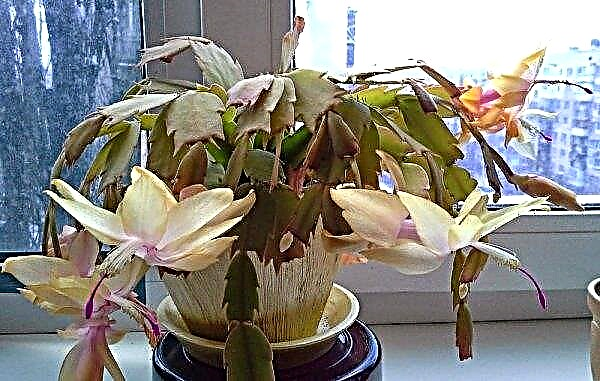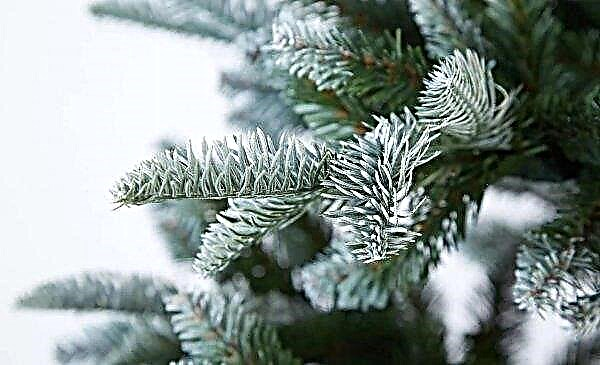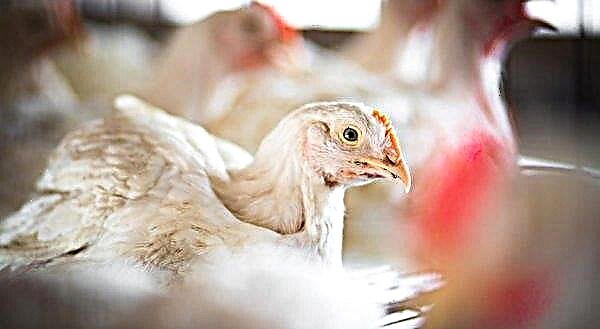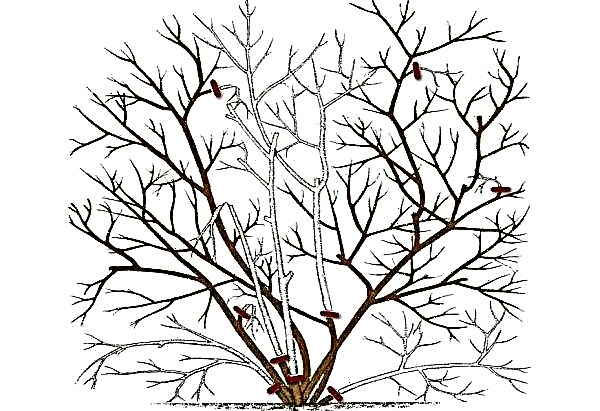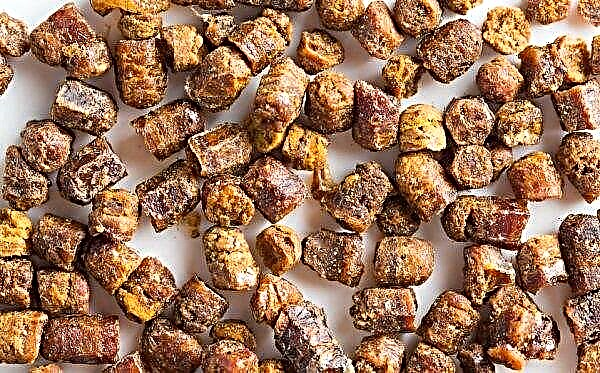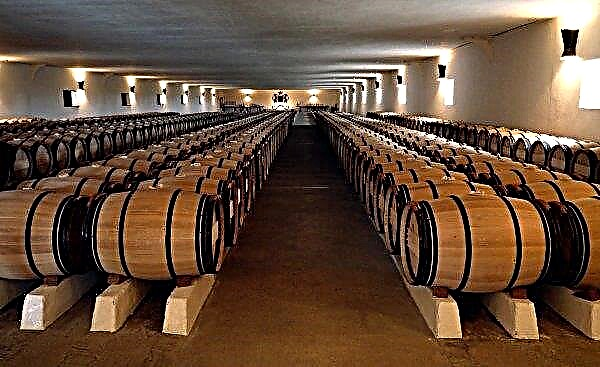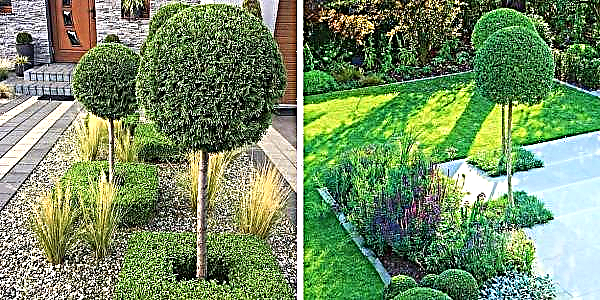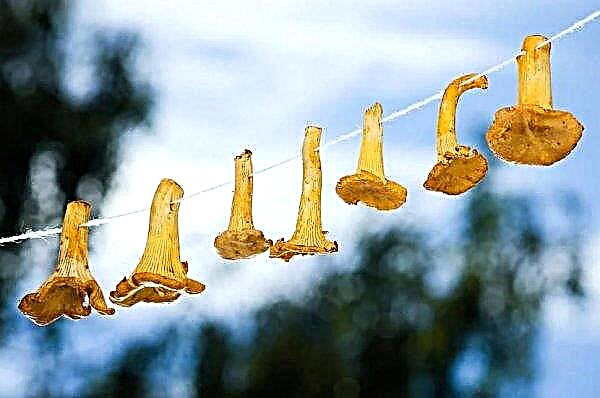This evergreen tree liana is as beautiful in its long flowering as it is capricious in home care. About breeding bougainvillea at home and its proper content will be discussed later.
Types of flower and their description
At home in Latin America, bougainvilleas are represented by 14 species, most of which grow in the mountainous regions of Brazil. And some species of bougainvillea are firmly rooted in human homes, becoming worthy of pottery crops. Most often they are presented:
- Beautiful bougainvillea, characterized by elongated flowers, framed by bracts of lilac color, and most often grown at home as an ampel plant;

- Astroy Gold, which is characterized by terry bracts of orange and red-orange hues;
- Bougainvillea naked (smooth)characterized by long and plentiful flowering, in which its bracts acquire apricot, pink, lemon and salmon colors;

- Astra Pink, which also blooms very abundantly in pink-coral bracts;
- Bougainvillea peruvianwith the ability to bloom magnificently several times during the season, for which it is pruned;

- California gold, characterized by large bracts of a radically yellow color, which gradually brighten with time;
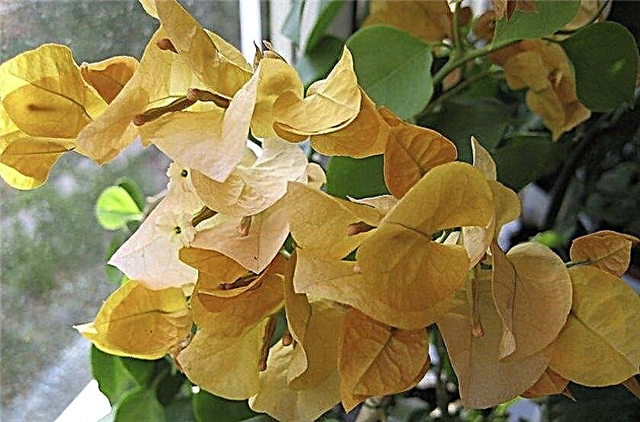
- Black India Red, distinguished by its rich purplish-raspberry bracts against the background of dark green leaves.

Did you know? In addition to its decorative qualities, bougainvillea is famous in its homeland for the ability to fight diseases of the upper respiratory tract, as well as hepatitis, hypotension and diabetes.
Methods of reproduction at home
Propagate this plant at home in three ways:
- Seeds that are quite easy to use, but very problematic to purchase, since indoor bougainvilleas do not give seeds, and buying seeds in a distribution network is quite costly. Seeds after four hours of soaking in a growth stimulator are planted in winter in loose fertile soil, covered with a film and kept at a temperature of at least 28 degrees in good light until germination occurs, which occurs no earlier than 2-3 months.

- With the help of not fully lignified cuttings 7-10 cm long, taken from the apical part of the plant.

- By means of a layering, which in the form of a long young, not yet lignified shoot, is strengthened in the autumn with a hairpin in a container with prepared soil, standing next to the pot where the mother flower grows. The place where the shoot comes into contact with the soil is slightly incised. After rooting the shoot in this place, which usually occurs within a month, the shoot is secatered by the secateurs from the mother plant.

Important! The plant is rooted most quickly if the container with soil is slightly warmed up from below.
Home Cherenkov Technology
In order to propagate this plant by cuttings at the very beginning of spring, apical processes of at least 10 cm long are selected on plants no younger than 5 years old. On the processes should be present 2-3 growth buds.  Further, the process of preparation and planting of cuttings proceeds as follows:
Further, the process of preparation and planting of cuttings proceeds as follows:
- The leaves on the processes from the bottom are completely removed, and the upper ones are reduced by half to reduce the rate of moisture evaporation during rooting.
- During the day, the cuttings should be kept in a solution of “Heteroauxin” or “Kornevin” to activate the formation of roots.
- After this, the cuttings are planted in the soil, prepared from a mixture of sheet soil and river sand in equal proportions.
- From above, the planted process is covered with a glass jar or a plastic container and placed in a bright place with a constant temperature of at least +25 degrees.
- Rooting occurs within a month and a half, during which time the coating is removed from the stalk only during watering.
- The success of rooting is indicated by the appearance of new leaves on the handle.
- After that, the rooted seedling is transplanted into a small pot with a mixture in equal proportions of leafy land, peat, compost and river sand.
- Growing takes place in a bright place at a temperature of +18 degrees.
- When the shoots reach 5 cm in length, the tops are nipped at them.
- After the developed roots completely braid with an earthen lump, the plant is reloaded into a new pot with a diameter of at least 12 cm.
- After this, watering should be regular and plentiful, but not excessive in order to avoid waterlogging of the soil.
Video: Cutting of bougainvillea
Care after cuttings
A full-fledged plant, obtained during the cuttings, needs subsequent care, which is simple, but requires accuracy and systematicity.
Suitable microclimate
The optimal temperature for bougainvillea is in the range from 22 to 30 degrees Celsius during the active period and from 5 to 7 degrees Celsius during rest. This plant does not withstand temperatures below +4 degrees. But it also does not like excessive heat, so in summer at high ambient temperatures it is recommended to spray it with standing water. This is all the more useful because bougainvillea prefers the high humidity of its habitat.
This is all the more useful because bougainvillea prefers the high humidity of its habitat.
Together with high humidity, this plant requires bright light, which should not be direct, but scattered. But during the rest period of bougainvillea, 5 hours of daylight is enough. Pots with a plant feel best on window sills facing south or west. In summer, flower pots are useful to take out to fresh air, placing them so that direct rays of the sun do not fall on the flowers and leaves.Important! During the flowering period, flowers should not be sprayed to avoid harming the bracts. At this time, it is better to moisten the air around the plant with a sprayer, a wide tank of water installed next to the flower pot, or a special humidifier.
Watering and feeding
During the period of active growth and flowering, the plant needs regular and plentiful watering. However, having a mountain origin and the habit of growing in natural conditions on stony soil, bougainvillea does not tolerate stagnation of water. Therefore, if water is collected in the pan after irrigation, then it should immediately be removed from there.
During dormancy, the flower is watered much less often - once every couple of weeks. But at the same time, one should not forget that bougainvillea is afraid of drought no less than stagnation of water, therefore, it is impossible to allow complete drying out of the earth coma during the rest period.
In addition to competent watering, this plant requires regular fertilizing with fertilizers. It is best to use special mixtures for flowering plants containing an increased concentration of iron, potassium and phosphorus. Typically, a flower is fed with liquid fertilizers, starting in early spring and ending in mid-autumn. Organic fertilizers are rarely used, since the plant does not tolerate excess nitrogen.
Did you know? Bougainvillea is often called a paper flower because its bracts are similar to crumpled thin paper of different colors.
Trimming and shaping a bush
In the maintenance and care of bougainvillea, pruning is one of the most important places. It creates a decorative appeal of the plant and activates its flowering. Carry out pruning several times during the year:
- In spring, branches dried out during the winter, as well as weak-looking shoots, are removed from the plant.
- In summer, lost their decorative appearance inflorescences are removed.
- After abundant flowering in the fall, when the bracts lose their attractive appearance, young shoots of the plant are shortened by a third of the length so that at least 6 buds remain on them. Completely young shoots that violate the harmony of the bush are removed. At the same time, it is recommended not to touch branches older than 3 years, since this causes a noticeable injury to the flower.
Video: Trimming Bougainvillea
Before the onset of dormancy, the plant can be shaped either as a bush, consisting of many shortened trunks, or vines, which will rise along the supports specially installed near the pot.
Possible difficulties
During the cultivation of this plant at home, it is able to undergo diseases and pests in the form of:
- Mold, which is manifested by the appearance of white spots on the leaves, which is provoked by excessive humidity and the absence of fresh air. To solve the problem, it is recommended to improve the ventilation of the room.
- Rotinfecting the root system. The roots affected by the fungus must be trimmed, and the remaining rhizome is transplanted into a disinfected pot with new soil.

- Aphids, which settles on the underside of the leaf and leads to its discoloration, twisting and falling. To combat aphids, insecticides are used, for example, Actellic, as well as a soap solution.
- Mealybugwhich damages flowers, buds and pedicels. They also fight it through treatment with a soap solution, after cutting off the affected parts of the flower.










